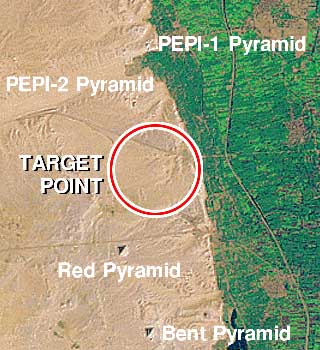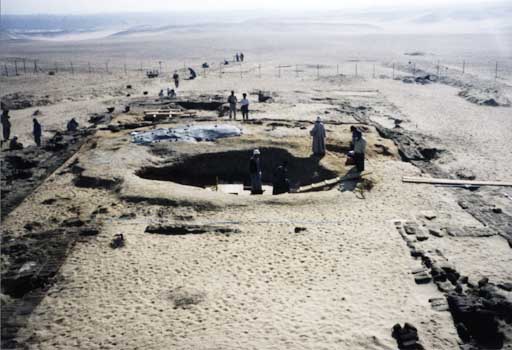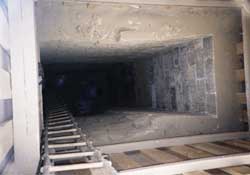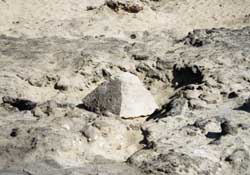|
A discovery of the ancient Egyptian remains
by using satellite data
With the aid of satellite remote sensing technology, previously unknown ancient remains were detected in the Memphite necropolis of Egypt. It was the first discovery in Egypt using this new method. The joint project team of Tokai Research & Information Center and The Egyptian Culture Center of Waseda University was authorized for the study. The main purpose of this study is to detect undiscovered remains in Egypt by the analyses of satellite data and ecology of the Egyptian dynastic period.
The most remarkable discovery so far was a mud brick construction
which was found at Dahshur North (some 20 km south from Giza). The remain
is considered to be a typical tomb-chapel in the New Kingdom period. The
total length is approximately 47m and the width is up to about 17m. It
should be noted that one of the largest tomb-chapel comparable to the
tomb-chapel of Horemheb (47m in length and 15m in width) at Saqqara. Horemheb
was the person in charge of military affairs under Tutankhamun, and became
the pharaoh later after Tutankhamun's successor. So far, more than four
thousand findings, such as a limestone pyramidion (cap stone), shaft,
underground chambers, rings bearing a hieloglyph, beads, amulets, etc.,
have been uncovered from the site.
The New kingdom monuments have not been reported in Dahshur area so far,
and the site is on a high location between the area of south Saqqara and
Dahshur which is surrounded by the Old Kingdom and the Middle Kingdom
monuments, its topographical importance will be revealed with the future
excavation.


Map and Landsat-TM image over Dahshur North area Copyright(C)TRIC

The discovered mud brick architecture (Tomb-chapel) by using satellite data


Uncovered shaft and pyramidion
Updated on June 8, 1998